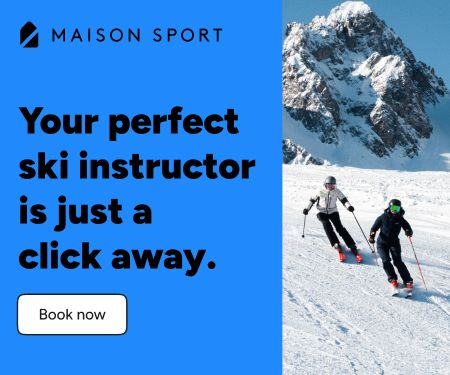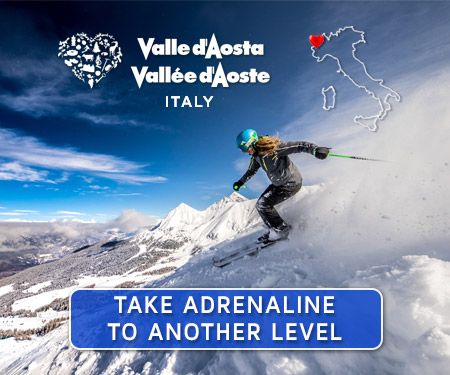Ranked
106th
of 236 ski resorts
Overall Rating
4.33
From 124 Reviews
186
Total Runs
9600
Bottom Elevation
12998
Top Elevation
2908
Skiable Terrain
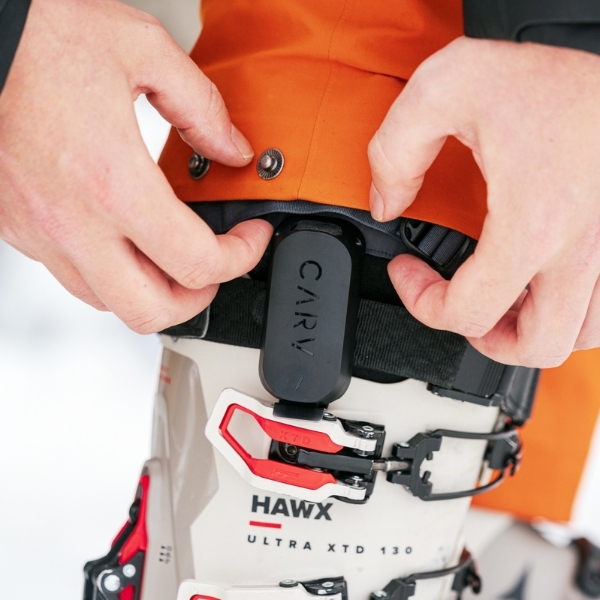
Sponsored Partner
Unlock Challenging Slopes in Breckenridge
Level up your ski technique, master more of the mountain and have more fun on the snow with Carv! Carv 2 clips to your boot, helping you to improve on every terrain type. Get real-time audio coaching as you ski, as boot sensors detect your movement.
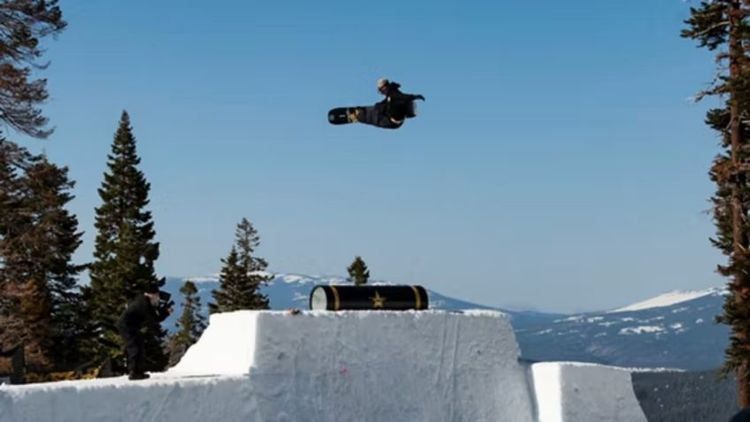
Breckenridge Overview
Breckenridge is a ski resort in central Colorado, less than two hours by car from Denver. A historic mining town, Breckenridge is now best known for the ski resort which towers above the town. In terms of elevation, Breckenridge is one of the highest ski resorts in the entire world, its highest point above anything found in Europe. Beyond height and a maximum vertical drop of nearly 3,400 feet, there’s a lot of breadth as well. The ski area consists of nearly 3,000 acres of terrain and stretches across five peaks. There are steep slopes stretching far above the tree line and dozens of epic runs accessible only by hike (some short, others not so much). The only beginner-friendly terrain is found in the lower reaches of the mountain, just above the lively town. There’s lots to enjoy, but be prepared for harsh weather and variable conditions.
"Brec is the place to go in the US. Fantastic high terrain skiing. Plenty of vert. Lift lines are not too bad. Can be a bit crowded during peak holidays, but even then, it's not so bad."
"An epic resort favorite. Large resort with often great snow and terrain. Skied here with my son and we loved it."
"Great mountain that is high in the Rockies. Always consistent snow quality. Terrain for every level of skier. A fantastic real town with great restaurants and bars!"
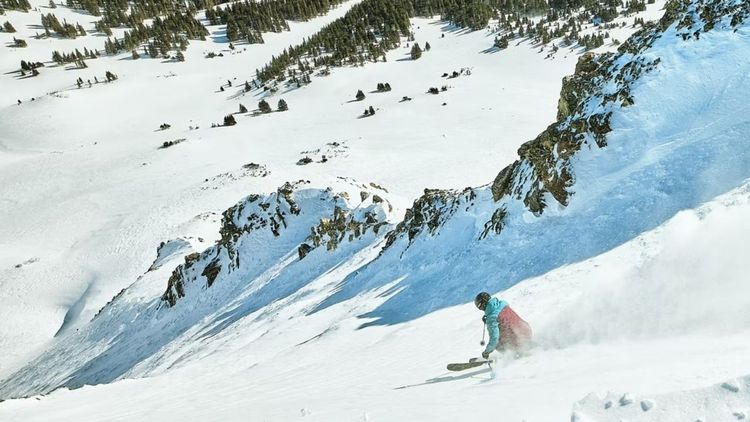
The Skiing in Breckenridge
Though Breckenridge (popularly known as Breck) has one of the most homey, least resort-feeling ski towns in Colorado, chances are you’re going primarily to ski. Breck is most notable for its elevation skiing. More than a third of the terrain is above the treeline, with some runs reaching nearly 1,500 feet into the alpine wasteland. This generally translates to higher snowfall, but also more extreme weather (the two are obviously related). Many Coloradans call it ‘Breckenfridge’ for this reason, so be prepared for the cold or, even worse, have your favorite high-mountain lift close due to extreme conditions. Most of the resort consists of east-facing slopes, but I’ll get into exactly what that means later.
There are lots of places you can start your day at Breckenridge. Luckily it is very easy to get from one part of the resort to any other so in a certain sense it doesn’t matter where you start your day. Getting around Breckenridge is much more intuitive than navigating around many others in Colorado, which is a huge plus for skiers new to the mountain.
In a stroke of creative genius, the founders of the ski area chose to name the resort’s five summits Peak 10, 9, 8, 7, and 6. Generally speaking, we can divide it between the southern reaches (the areas below Peaks 10 and 9), a northern portion (a wider region stretching from the tree line below Peaks 8, 7, and 6), and the high-altitude ski area (the summits and approaches of Peaks 8, 7 and 6).
Starting from the south, we have those lower regions which consist mostly of the beginner runs I was telling you about. These are fine, but at the end of the day, they can get busy and somewhat scary for a newbie zone, frankly. Pass above them and you have the Falcon Superchair reaching up toward Peak 10 and a string of chairs all stretching toward Peak 9.
Generally, I prefer Peak 9. The Falcon services several expert-rated runs. The chair is fast, the vertical rise is high, and the terrain is good (most of the time, anyway). In other words, this is an efficient place for advanced skiers to make turns and avoid waiting. There are tree runs on both sides (but the best are all skier’s right) and a mix of tough cruisers and gnarly mogul fields. What’s not to love?
The area below Peak 10 has many lifts to choose from but they all service similar terrain. Intermediate frequently groomed runs, for the most part. I’d recommend it more highly if it weren’t for the fact that there are better, longer, and less crowded groomers over on Peak 6 (more on that later).
The exception to this is the E Chair, an ancient two-seater that doesn’t go very high and makes up for that by going very slow. The catch is that the terrain is great and the crowds are nowhere to be seen. Every run off of the E Chair is rated double-black, but in my opinion this exaggerates the difficulty of some of the routes. It’s experts-only terrain to be sure, but nothing too scary.
I said Breckenridge is easy to navigate, but there is a tricky choke point: there’s only one (well, one and a half, really) way to get from the southern part to the northern part. You need to take the Peak 8 Super Connector. You can either load at the bottom of the lift or get on the midway station after running the E Chair.
The Super Connector drops skiers off below the tree line beneath Peak 8. The lower reaches of the northern half of Breck are more varied than what you see in the south. A handful of lifts serve a mix of beginner, intermediate, and advanced runs as well as a bunny hill and a basic terrain park. The catch is this area is generally more crowded.
Going up instead of down, the Super Connector also services the 6 Chair. It’s like the E Chair’s twin: slow, old, and only serving expert terrain. Of the two, I strongly prefer the E Chair as conditions tend to be better and other skiers less common.
The far north is a wide area full of great intermediate and regularly groomed runs. Skiers who like to cruise will be happy to ski the Independence/Freedom area (two lifts serving the same terrain) or, slightly further afield, the area served by the Kensho SuperChair, which does go above tree line but the terrain is still fine for intermediate skiers. The large number of discrete runs and the fact that there are now three lifts in this area means it seldom gets too crowded.
Now we can get to the wide swathe of barren land above the tree line. On the map you’ll see dozens of black lines over white snow. Most of these will require a hike and certainly demand confidence, skill, and preparation on the part of anyone attempting to ski them.
But you don’t need to take off your skies to ride the Imperial SuperChair, Breck’s highest. Weather allowing, it opens up an entirely different part of the mountain. You can ski straight down along the ridge and back up to your heart’s content, or hike up to Peak 8. If you’re fit, this can be done in as little as 10 minutes and provides access to lots of extreme terrain. Many routes will require additional traversing, but I find simply following the ridge till near the end and taking Zoot Chut to be most rewarding. All major cliffs and hazards can be avoided, but you still need to know what you’re doing. If you’re new, I recommend chatting up whoever happens to be walking near you or resting at the top to get some idea.
It’s also possible (and in my mind preferable) to access Breck’s high-elevation terrain from the Kensho SuperChair on Peak 6. The length of the hike is similar to what you get on Peak 8, but the runs are nicer. Choose any of the dozen runs along the south ridge and you aren’t likely to choose wrong.
Now here’s the caveat. This applies to those Peak 6 runs I just mentioned but also, to an extent, the entire mountain. Breckenridge has very variable conditions. The high areas are closed due to high winds semi-regularly. Other times they are too icy to be enjoyable.
As for the rest of Breck, it’s mostly east-facing. This means more sun. On a hot day, this means slushy conditions, especially but by no means exclusively in the lower parts of the ski area. This slush will then solidify overnight, so icy conditions are more common at Breck than at other nearby resorts that aren’t predominately east-facing. Skiing early can help you avoid some of these issues, but if you’re the type to ski from open to close, the conditions can change dramatically even in a single day. High elevation also means high wind, which can create hazards and general unpleasantness.
In short, Breckenridge has great terrain and excellent views. It isn’t as crowded as Vail or as tricky to navigate. But conditions on the mountain are highly variable and can be, quite frankly, nasty. When it’s great it’s great, and when it’s not, it’s not.
"Terrain is filled with amazing and fast groomers. Hike-to terrain has the best bowls in Colorado, always fresh powder to find."
"Breckenridge was a great experience overall as an expert skier it gave me lots of good opportunities."
"Breck is one of my favorite mountains that Ive ever been to. With the open trail runs, and vast options for how you want to hit the mountain, its one I can come back to time and time again."
Eating Out in Breckenridge
On-mountain dining at Breckenridge is solidly okay. Expect to pay a lot and not leave totally satisfied. There’s cafeteria-style dining at all the major areas: Ten Mile Station at the base of the Falcon SuperChair, The Overlook at Peak 9, Vista Haus above the Peak 8 base area, and Pioneer Crossing where the Freedom and Independence chairs meet. All serve similar fare. Sevens at the Peak 7 base area is the only full-service restaurant.
Predictably, the options at the base are better and less expensive. The fact that most ski lifts start a ways above the town means that eating will take more time out of your day than you might like. The town is definitely more suited for taking an end-of-ski-day lunch than it is for a short culinary break.
There are a string of pubs along the main street offering solid bar food. The Tavern Underground has a nice atmosphere, reasonable prices, and excellent burgers. Breckenridge Brewery serves local beer and the type of food you would expect but with a quality that may surprise you (in a positive way). Motherloaded Tavern and Ollie’s Pub & Grub both serve food but are more notable as a place where locals drink.
If you’re looking for fancier fare, Hearthstone is worth considering. At the very least you should slowly walk by as the building is a gorgeous former private residence. Similar care is taken to prepare the interior fixtures as well as the food. If you’re looking for Italian, I recommend Radiciato. For French, try the appropriately named La Francaise Bistrot.
It’s also worth noting that the cute town of Frisco is less than 30 minutes away (without traffic, so a lot longer on a Sunday afternoon). It’s like Breckenridge without the ski resort, less polished but more homey. There are a host of restaurants and bars but I will single out The Lost Cajun.
"Great food scene as well with loads of options."
The Après-Ski in Breckenridge
Compared to most ski resorts in central Colorado, Breckenridge feels more like a town than a resort. For me, this is generally a plus. That the main drag is somewhat detached from the ski area is a con for lunch, but it’s firmly in the ‘pro’ column when it comes to après as a great many establishments are within a short walk of each other. Basically, I am giving you permission to do a bar crawl.
As I said earlier, Breckenridge has plenty of great local bars. The aforementioned Ollie’s and the Motherloaded Tavern are probably the most popular for post-skiing drinks, with Ollie’s having more of a focus on screening sports events. Many pubs regularly host live music after dinner. For DJ-driven music and later nights, Cici’s is the best option.
The town also has multiple breweries, plus Breckenridge Distillery (I am not a whiskey drinker so no comment on the quality) and The Absinthe Bar. Basically, just walk down Main Street and you’ll find something. Then, if you so choose, move on and you’ll find something else.
"Downtown Brec is great for apre ski and also has fantastic night life."
Breckenridge for Families
Breckenridge is run by Vail Resorts, a company that certainly cares about its image. Things are clean. The town and resort are well run.
As I said before, when it comes to skiing Breck is a bit problematic for newbies, but there is a ski school where instructors will gauge students’ ability and keep them on the bunny hills and greens as needed.
Compared to other nearby resorts, Breckenridge has a more active nightlife culture. Walking down Main Street, the sounds are louder and continue later than elsewhere. Like any resort in Colorado, you are unlikely to spend a week in Breck and never catch a whiff of marijuana.
Breckenridge is livelier and slightly rougher than places like Aspen and Vail, but that doesn’t really say much if you know what those towns are like.
Yes, Breckenridge is family-friendly.
Breckenridge for Non-Skiers
Breckenridge is a pretty town, full of pretty historic houses. Walking the streets is a pleasant contrast to more resort-y ski towns. It’s well worth it. That said, you could walk down every street in an afternoon so non-skiers will need other things to do.
When that time comes, there’s snow-shoeing, winter hikes in the lower elevations and the western side of the valley, ice skating, tubing, and even dog sledding (memorable but expensive). There are also multiple spas and all those restaurants and bars mentioned above. You can also take a scenic drive up to Leadville to see the highest city in North America and Colorado’s highest mountains. Or go just down the road and explore Frisco, another historic town where similar activities are offered.

Accommodation in Breckenridge
Breckenridge has plenty of places to stay. As with any popular resort you may need to book far in advance. If you do, you’ll find ski-in/ski-out homes (and many more that only require a short walk to get to the lifts), posh hotels, luxury condos, not-so-luxurious condos, and even some cheaper options, shockingly.
If you’re looking to save, The Fireside Inn is a great no-fuss option. It’s a short walk from the Breck Connect Gondola (you’ll have to take another lift from the top before you can actually ski). If you’re willing to drive a half hour, the twin towns of Silverthorne and Dillon will be cheaper than what you’ll find in town. This is a great option if you’re looking to try multiple resorts as you can ski Vail, Copper Mountain, Keystone, and Breckenridge with ease.
Environment and Sustainability in Breckenridge
As a part of Vail Resorts Incorporated, Breckenridge is a part of the company’s pledge to reach zero net emissions by 2030. On the other side, the Town of Breckenridge adopted a far-reaching sustainability plan in 2011 to reduce waste, and CO2 emissions, protect wildlife habits, and generally make the town more livable. The update to that plan released in 2022 shows significant progress has been made. The town aims to electrify all public transport by 2030 and be fully carbon neutral by 2050.
So both the company that runs the resort and the town of Breckenridge have ambitious goals in the realm of sustainability and wildlife protection. Wolves were reintroduced to Colorado in Summit County, the seat of which is in Breckenridge. Whether these goals will be met remains to be seen, but the town and resort do release regular progress updates and are certainly making efforts to be more sustainable - efforts that are plainly visible to any visitor.
Recent Reviews
expert snowboarder 🏂 United States
Scott
Dec, 19 2025
Breckenridge is always a go to for our family, plenty of terrain for the whole group and a good mix of stuff for both kids and adults to do. Love the authentic feel of the town and the welcoming helpfulness of everyone.
intermediate skier ⛷️ United Kingdom
Kristen
Dec, 16 2025
Breck is a great stop on the Epic pass with plenty of areas to hop around to avoid crowds and try new runs. It’s amazing when there’s powder.
advanced snowboarder 🏂 United Kingdom
Morgan
Dec, 16 2025
Love Breckenridge mainly for the town! The restaurants and bars are so fun and great options for both family and a fun night out. Also not too far from denver
Breckenridge Resort Stats
Ski Terrain
24Beginner Runs
43Intermediate Runs
67Advanced Runs
52Expert Runs
3.5 milesLongest Run
2908 acresSkiable Terrain
600 hectaresSnow making
Elevation
12998 feetTop
9600 feetBottom
3398 feetVertical Drop
Lifts
1Gondolas / Cable Cars
18Chairlifts
Lift Pass Costs
$949Season pass
$12467 days
$2031 day
Weather
305 inchesAverage annual snowfall
Breckenridge Travel Information
Airports
120min drive105KMsDenver International (DEN)
Train Stations
20min drive18KMsFrisco Amtrak Station (Frisco, CO)
FAQs Skiers' Most Asked Questions
Breckenridge FAQs: Skiers' Most Asked Questions
Is Breckenridge snow-sure?
Breckenridge's high elevation (base at 2926m and peak at 3962m) helps ensure reliable snow conditions throughout the season. Its position in the Colorado Rockies typically delivers consistent snowfall, with the upper bowls and peaks maintaining good coverage even during drier periods. Several users mention the quality of snow, with one Snomad community member noting "consistent snow quality" and another highlighting "perfect powder" during their visit. The resort's extensive snowmaking capabilities also help maintain conditions when natural snowfall is lighter.
What mountain range is Breckenridge part of?
Breckenridge Ski Resort is located in the Rocky Mountains of Colorado, specifically in the Tenmile Range. Standing at nearly 3,962m, the resort boasts North America's highest chairlift. The elevation provides fantastic snow conditions throughout the season, with several Snomad users mentioning the consistent quality of powder across the resort's five peaks.
When does the ski season start and end in Breckenridge?
Breckenridge typically opens in early to mid-November and remains open until late April or early May. Our users note that it's often one of the last resorts to close in Colorado, with Mark, an advanced skier, mentioning they closed in May 2024. The high altitude helps maintain snow conditions throughout the season, though expect more limited terrain in late April as the spring thaw begins.
Is Breckenridge good for beginners?
Breckenridge is excellent for beginners! With 24 dedicated beginner runs and a rating of 4.43/5 for beginners, there's plenty of terrain to build confidence. Richa, a first-time skier, said "I took lessons here that have helped me everywhere I go! Everyone is so nice and helpful." The resort offers top-notch ski school programs that users consistently praise. While some green runs can get busy, the mountain's layout allows new skiers to progress comfortably.
Is Breckenridge good for intermediate skiers?
Breckenridge is fantastic for intermediate skiers, scoring 4.24/5 for intermediates. With 43 dedicated intermediate runs and excellent grooming (4.59/5 rating), you'll find plenty of terrain to enjoy. David, an intermediate skier, praises the "well maintained slopes" while Aislinn mentions the "long trails and efficient lifts mean that you spend more time on the slopes than waiting in line." The mountain's layout allows intermediates to progress confidently while enjoying spectacular Rocky Mountain views.
Is Breckenridge good for advanced skiers?
Yes, Breckenridge is excellent for advanced skiers. With an overall rating of 4.33/5 and strong scores for advanced skiers (4.37/5)), it offers impressive high-alpine terrain. One Snomad community member notes, "With the highest lift in North America, they have some of the best steep and deep runs around." The back bowls are legendary, and the hike-to terrain at Peaks 6 and 8 (Lake Chutes and Six Senses) provides truly challenging experiences for those seeking serious steeps.
Is Breckenridge good for expert skiers?
Yes, Breckenridge is excellent for expert skiers. With a rating of 4.31/5 for experts, it offers challenging high-alpine terrain including Imperial Bowl (North America's highest chairlift), Lake Chutes, and the Six Senses area. One Snomad community member who's an expert skier praises the "tremendous amounts of terrain" and recommends the "hike-to terrain at the top of Peaks 6 and 8." The mountain's 34% double black diamonds provide plenty of steep challenges, while the back bowls are described as "legendary" by multiple users.
Is Breckenridge good for non-skiers?
Breckenridge is fantastic for non-skiers! The charming historic town offers excellent shopping, dining, and vibrant nightlife. Several Snomad users highlight the walkable Main Street with its variety of restaurants, bars and shops. As Eduardo notes, "Great town, main street is a must," while Juliet mentions the "great range of accommodation and restaurants." Activities like snow-tubing, ice skating, and horseback riding through snow are also available for those not hitting the slopes.
Is there snow at Christmas in Breckenridge?
Yes, Breckenridge typically has good snow coverage at Christmas. The resort sits at a high elevation (base at 2926m, peak at 3962m), which helps ensure reliable snow conditions during the holiday season. A Snomad user who visited during Christmas mentions, "We visited for Christmas and it was way quieter than expected with most of the mountain open. We got a good bit of fresh snow on Christmas Day." Another skier reports enjoying "perfect powder" during their December visit.
Where should I stay in Breckenridge and what type of accommodation is available?
Breckenridge offers excellent accommodation options (4.54/5) with varied choices across the resort. For ski-in/ski-out convenience, look at Peak 7 and 8 Base areas with their luxury condos and hotels. Peak 9 offers family-friendly options closer to town. Downtown Breckenridge has charming historic hotels and vacation rentals within walking distance to the gondola. As one Snomad user mentioned, "We stayed at Beaver Run resort and it was great because we could walk from our room to the lifts."
For budget-conscious travellers, consider lodging in nearby Frisco or along Airport Road. Luxury seekers will love the high-end condos at One Ski Hill Place or Grand Colorado. Many properties feature hot tubs, fitness centres and shuttle services. A user who is an advanced skier noted, "I visit Breck each year and it's the perfect resort for skiing of multiple abilities with an amazing town offering many excellent dining options."
What's the best way to get to Breckenridge?
For international travellers, the most direct route to Breckenridge is flying into Denver International Airport (DEN), which serves numerous international destinations. From there, you can:
- Take a shuttle service (Mountain Shuttle, Epic Mountain Express)
- Rent a car (90-minute drive on I-70, weather permitting)
- Book a private transfer
There's no need for a vehicle once in Breckenridge as the town offers free shuttle buses, and many lodgings provide airport transfers. Our Snomad users frequently mention the convenience of the free town transport.
ChatGPT:
For international travellers, the most direct route to Breckenridge is flying into Denver International Airport (DEN), which serves numerous international destinations. From there, you can:
- Take a shuttle service (Mountain Shuttle, Epic Mountain Express)
- Rent a car (90-minute drive on I-70, weather permitting)
- Book a private transfer
There's no need for a vehicle once in Breckenridge as the town offers free shuttle buses, and many lodgings provide airport transfers. Our Snomad users frequently mention the convenience of the free town transport.


